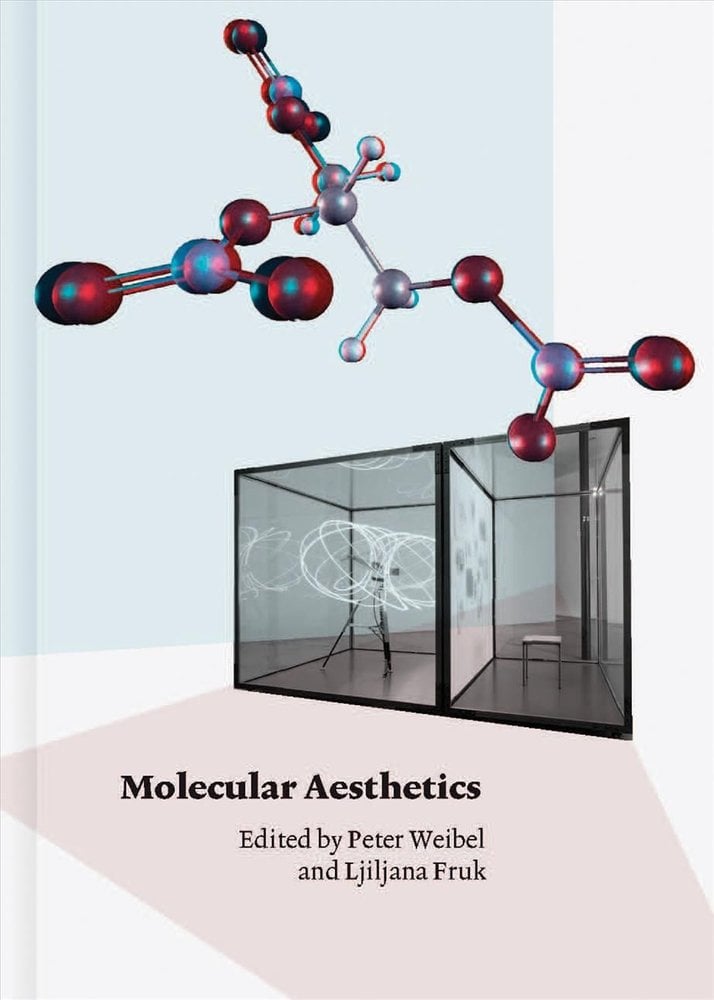
Molecular Aesthetics (2013) Peter Weibel & Ljiljana Fruk
This book draws on a symposium and exhibition at ZKM Media Art Centre Karlsruhe, in 2011 and 2013 respectively, it is coedited by Peter Weibel Chairman of ZKM and scientist Ljiljana Fruk and includes essays in the aesthetics of molecular forms with a focus on the connection between aesthetics and function, and a range of contemporary artworks that respond broadly to the themes.
This book which is structured in seven thematic sections proposes a transdisciplinary understanding of aesthetics of nano structures from the perspective of scientists and artworks from artists concerned with the intersection of art and science. This review focuses on Peter Weibel’s introduction to the book which outlines the logic underpinning the undertaking.
Weibel surveys the history of media as an organology, that is an extension of the human body allowing humans to go beyond the limits of their sensory organs to extend contemporary perception, or aesthesis, to the molecular level. He draws comparisons between the use of technical images in the advancement of science, our understanding of the natural world and the human body with (premodern) art system’s refusal of the technical image, and a commensurate refusal to depict the molecular nature of life itself, which he sees as a refusal to accept progress.
As the aesthetic of machinery and material marked modernism, the aesthetic of postmodernism, he proposes, is one of media, data and molecules. According to Weibel Media Art has, with its understanding of the role of technical media in extending human senses and capabilities, a particular role to play in giving insight into the molecular nature of reality. This gives rise to a molecular aesthetic that is equally influenced by the technical scientific imaginary (as evidenced in the volume) as it is by the chemically enhanced counterculture of the nineteen sixties, that he credits with a return to the body, alongside its influence on the culture of silicon valley (after Fred Turner).
From the perspective of this project this approach is useful for its foregrounding of the transdisciplinary nature of contemporary aesthetics which are rooted in a long history of artistic and scientific practice. Aesthetics in chemistry and media art are seen to be complementary with both structuring the practice of these disciplines in ways that are fundamental to their operation asdisciplines and by extension to the wider project of understanding their wider societal function. This act of reaching across disciplines and finding commonalities with aesthetics anchoring the inquiry should inform our own project.
Conor McGarrigle
TU Dublin
Weibel, P., Fruk, L., & Zentrum für Kunst und Medientechnologie Karlsruhe (Eds.). (2013). Molecular aesthetics. MIT Press.
ISBN: 9780262018784
